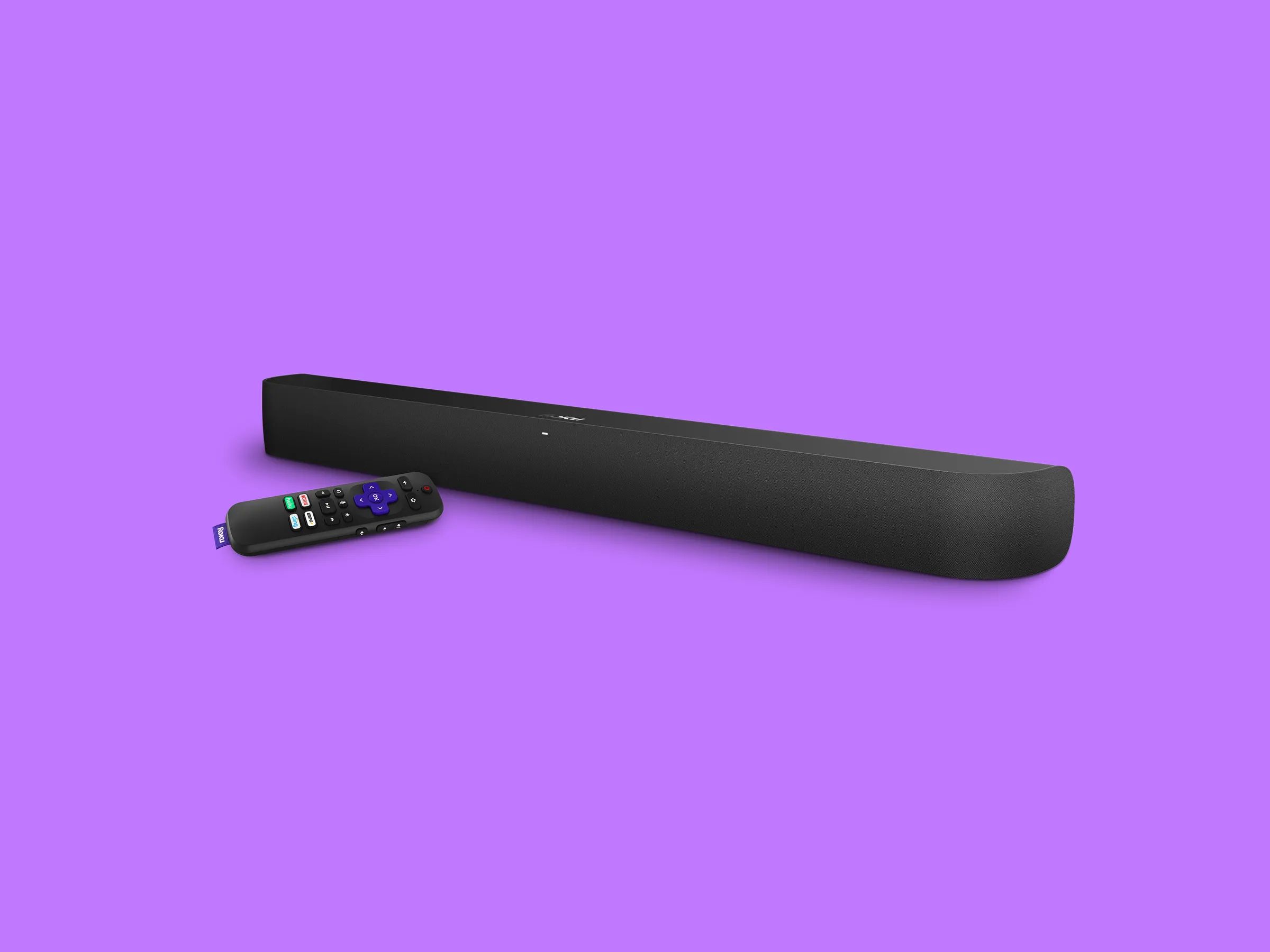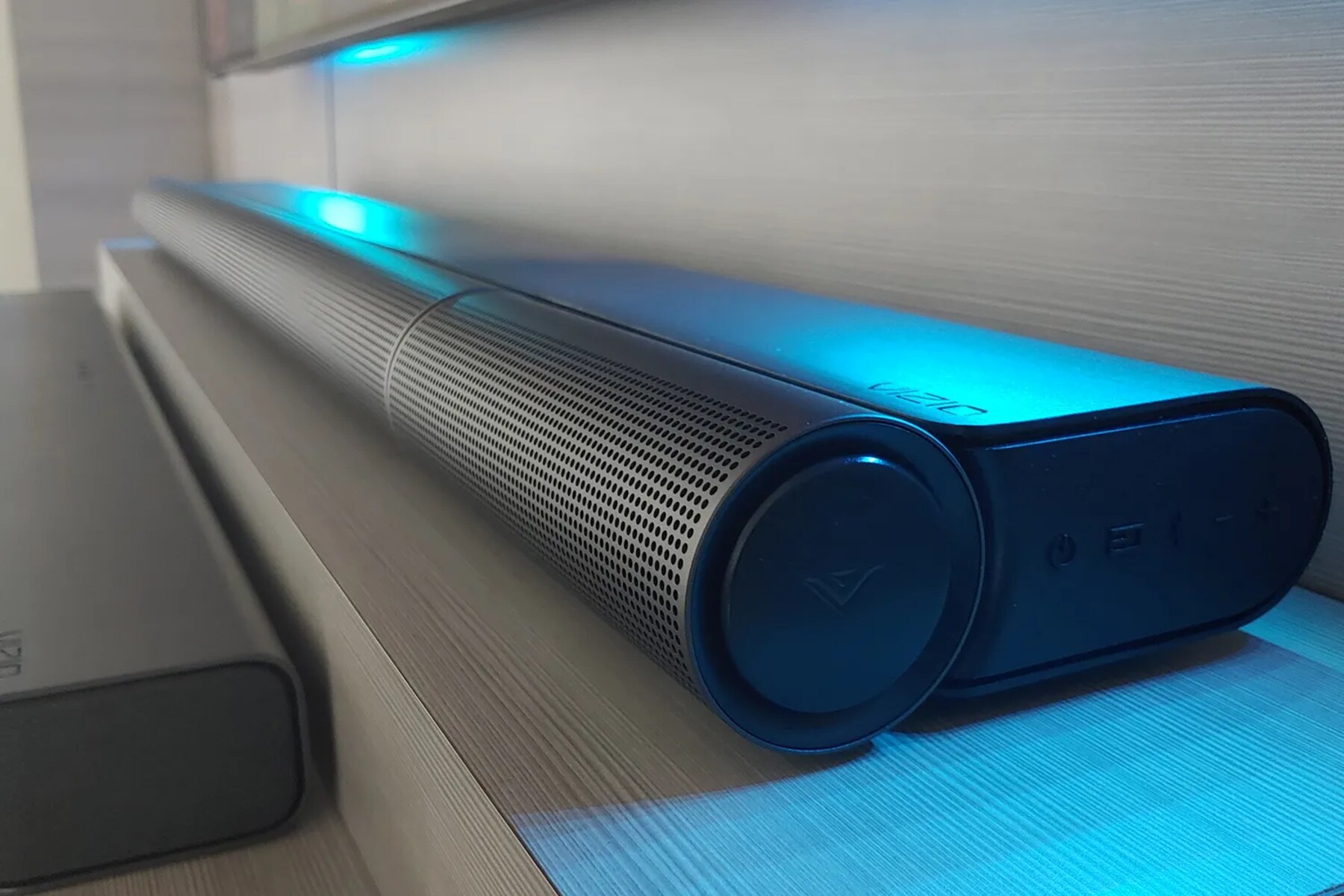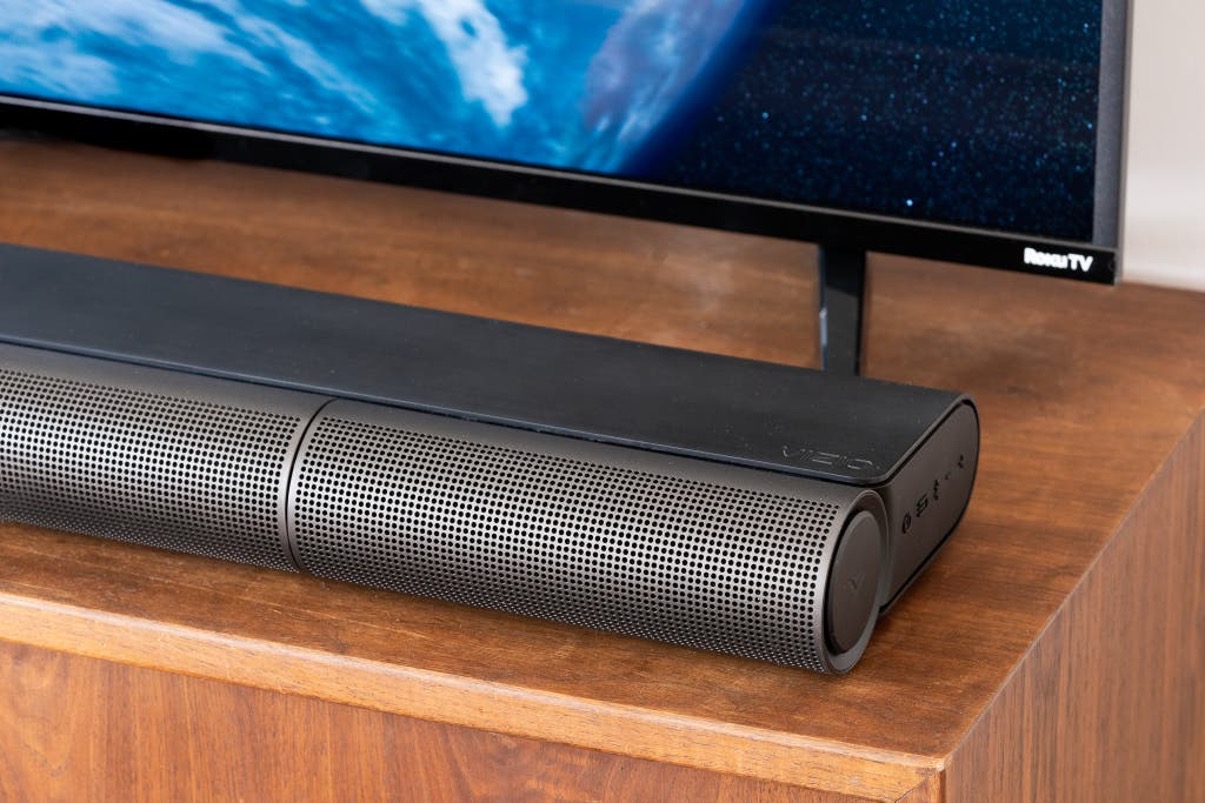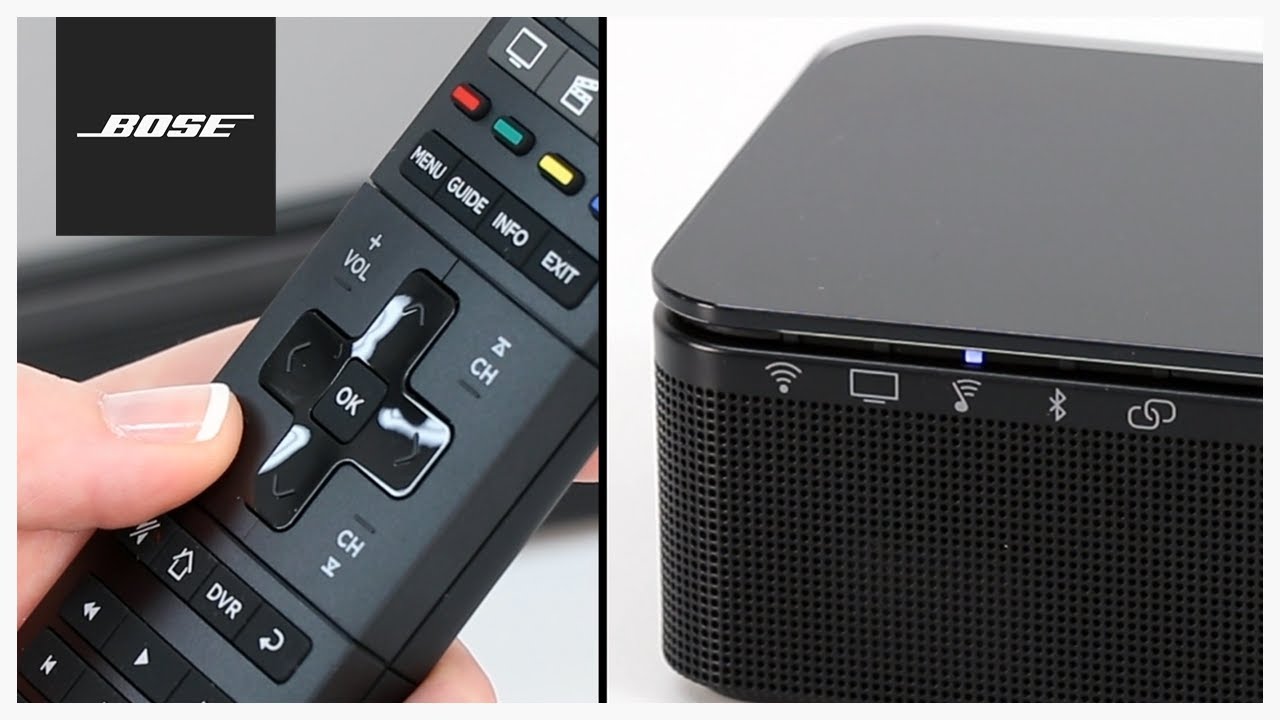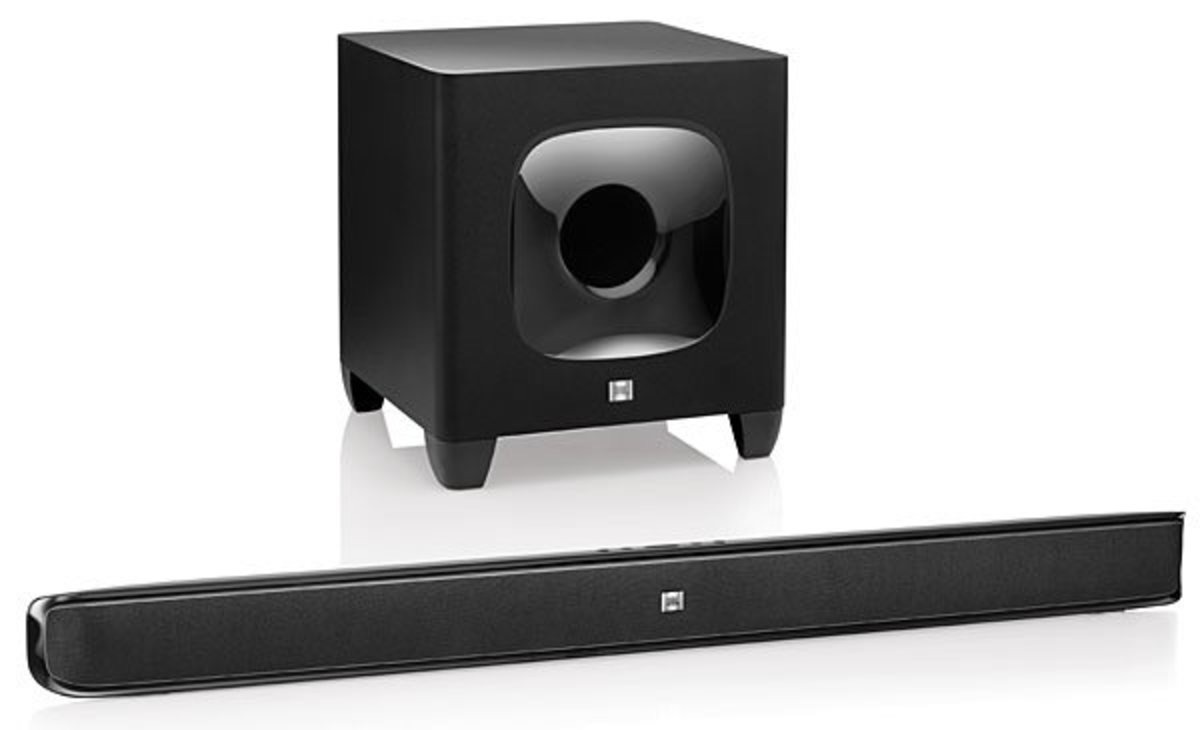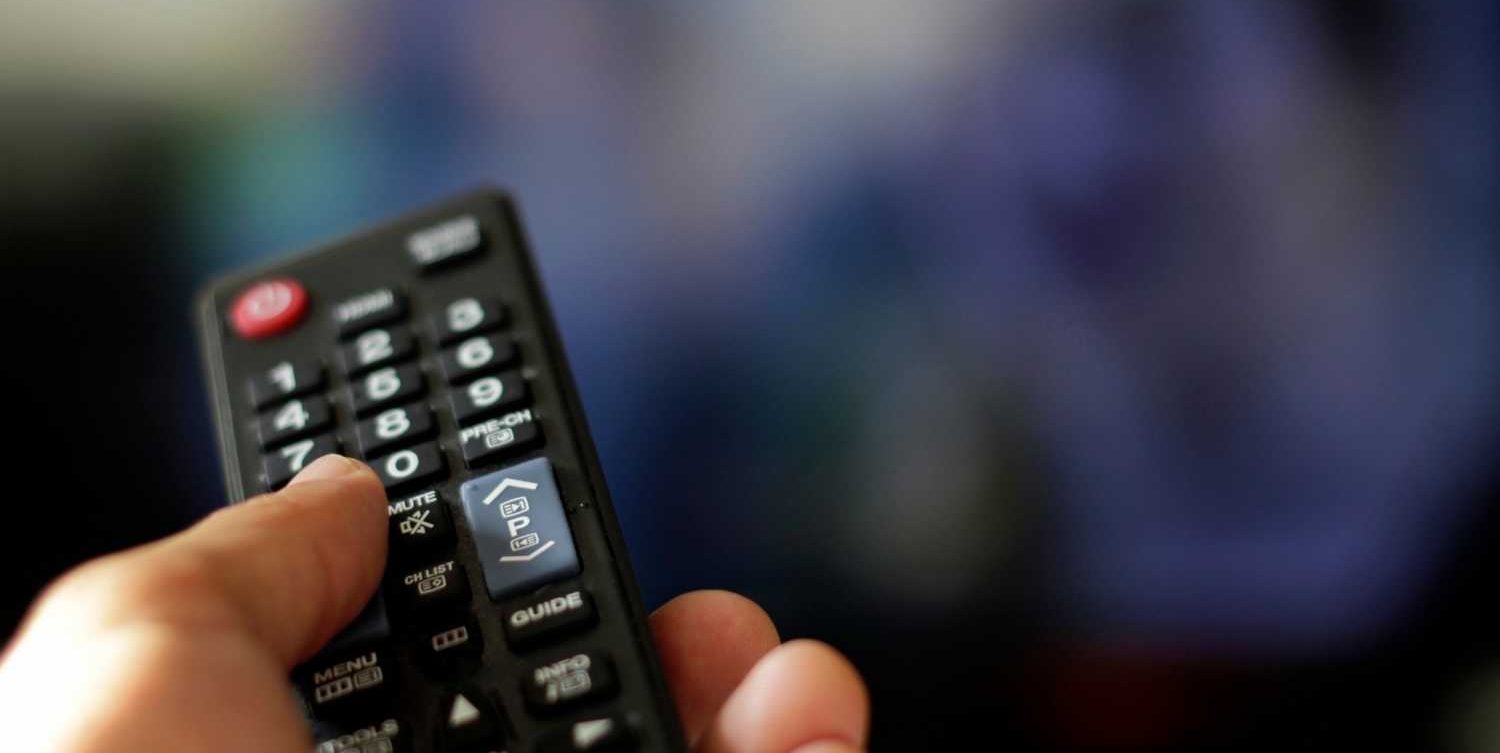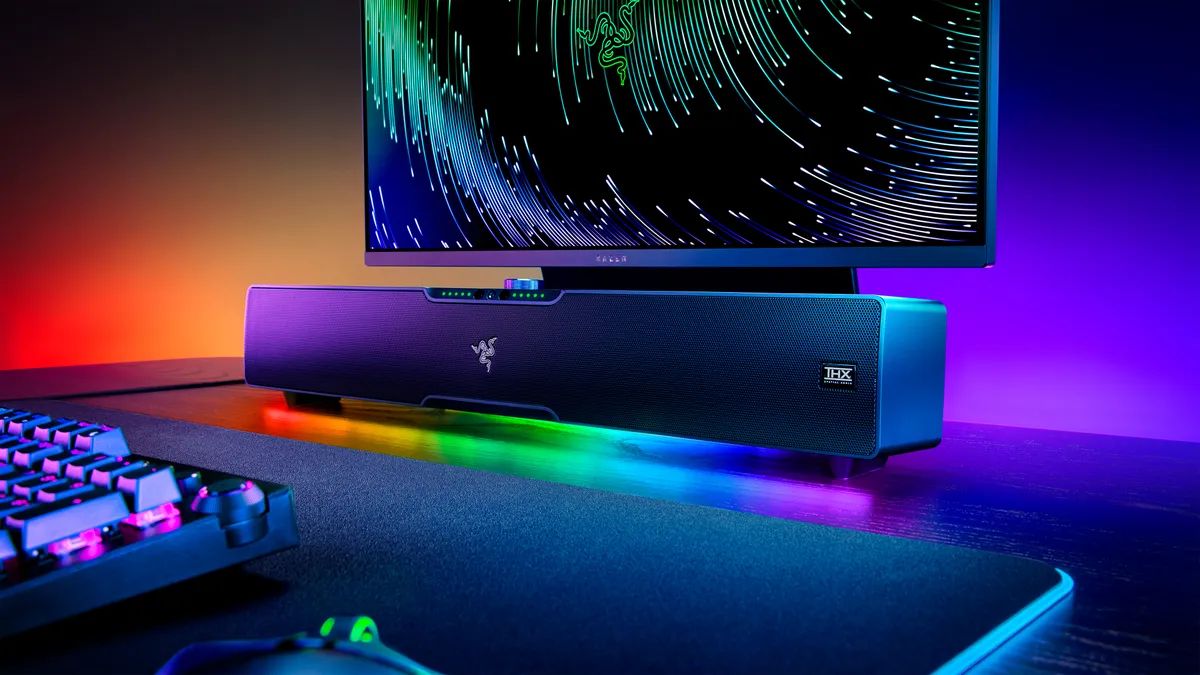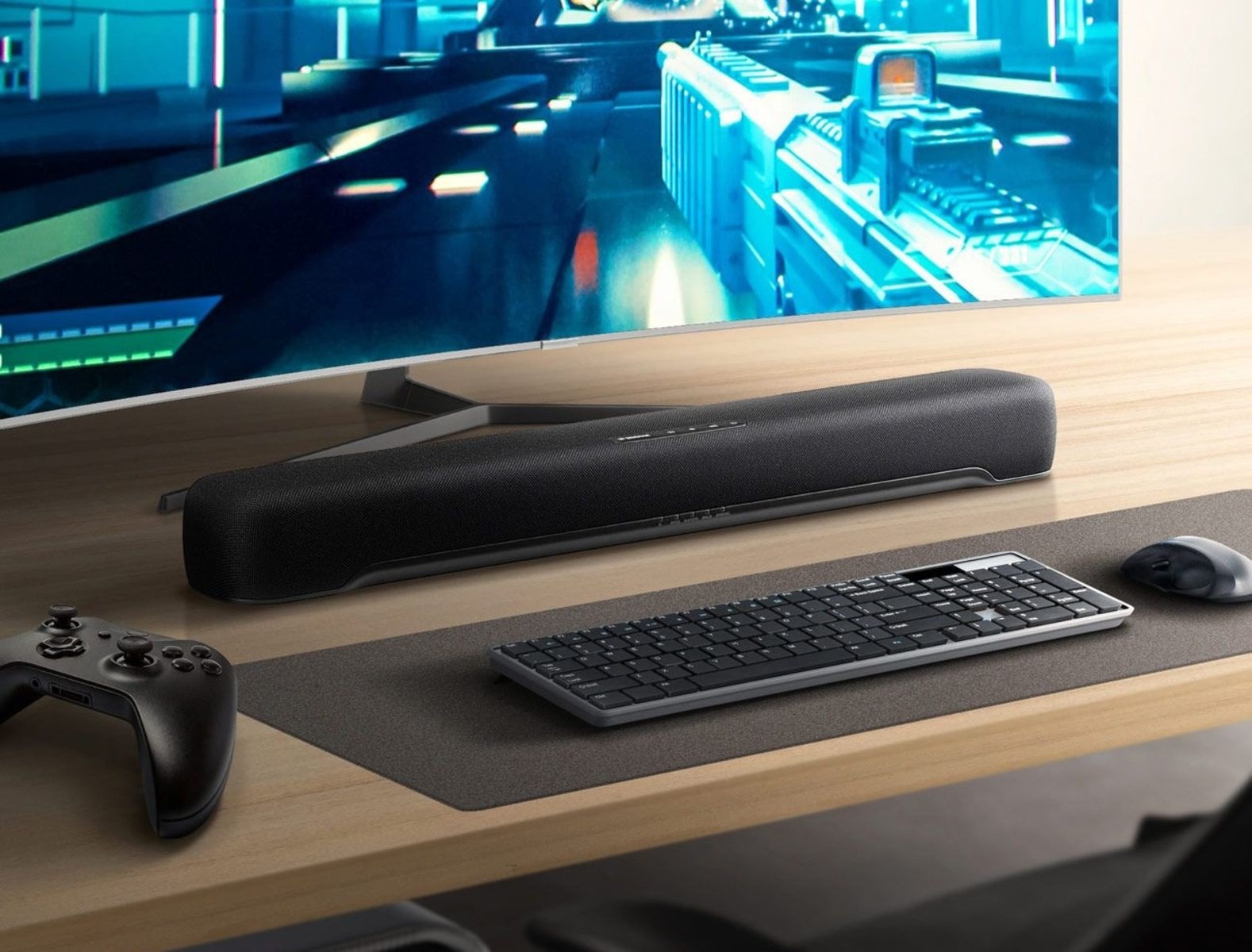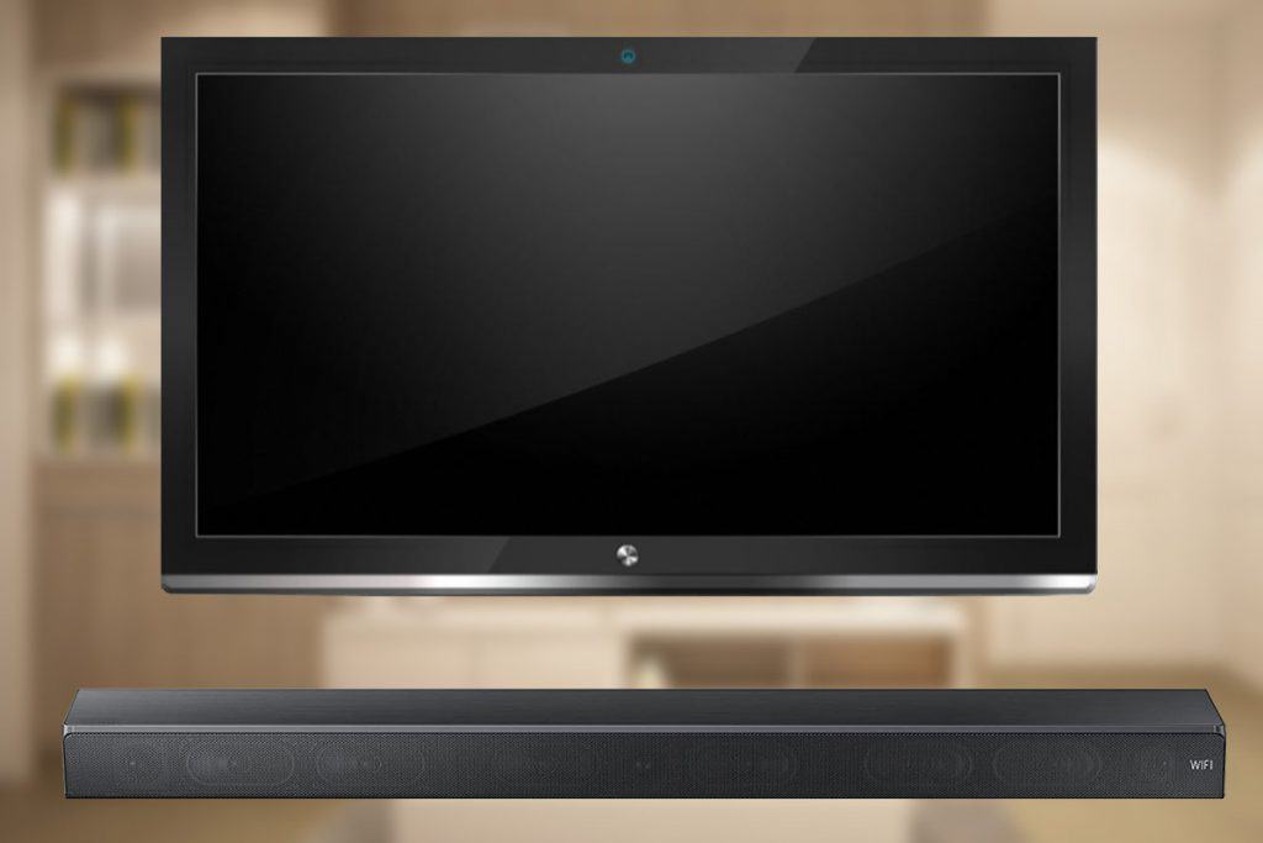Introduction
Are you experiencing issues with your soundbar? Is it not working as expected? Don’t worry, you’re not alone. Soundbar problems can be frustrating, especially when you’re in the middle of enjoying your favorite movie or TV show. However, with a little troubleshooting, you can often resolve these issues and get your soundbar back up and running in no time.
A soundbar is a great addition to any home entertainment system, providing enhanced audio quality and a more immersive experience. However, like any electronic device, soundbars can encounter issues that may interfere with their functionality. Common problems include no sound, low volume, audio out of sync, or connectivity issues with other devices.
Before you start panicking and assume the worst, it’s important to understand that most soundbar problems can be resolved with a few simple steps. In this article, we’ll explore some common soundbar issues and guide you through troubleshooting steps to fix them. Whether you’re a tech-savvy individual or a beginner, we’ll provide you with easy-to-follow instructions to help you get your soundbar back in working order.
It’s worth noting that soundbar models may vary in features and settings, so some troubleshooting steps might be specific to certain models. However, the basics of soundbar troubleshooting remain similar across most devices. So, let’s dive in and discover the possible causes and solutions for soundbar problems.
Common Soundbar Problems
Soundbar problems can range from simple connectivity issues to more complex audio-related problems. Understanding the most common soundbar problems can help you identify the cause of the issue and take appropriate action. Here are some common soundbar problems you may encounter:
- No sound: One of the most frustrating problems is when your soundbar produces no sound at all. This can be caused by issues with the power source, connectivity problems, or incorrect audio settings.
- Low volume: If you’re experiencing lower than expected volume from your soundbar, there may be a few reasons for this. It could be due to incorrect sound settings on the soundbar or your connected device, or a problem with the soundbar’s built-in amplifier.
- Audio out of sync: When watching movies or videos, it can be frustrating when the audio doesn’t match up with the visuals. This can be caused by a delay in the audio signal, often due to the audio processing settings on your soundbar or connected device.
- Connectivity issues: Soundbars often rely on wireless or wired connections to function properly. If you’re experiencing connectivity problems, such as the soundbar not connecting to your TV or other devices, it can disrupt your audio experience. Troubleshooting the connections can help resolve these issues.
- Unresponsive remote control: A non-responsive remote control can make it difficult to adjust the soundbar’s settings or control the volume. This can be due to issues with the remote control itself or a problem with the soundbar’s receiver.
These are just a few examples of the common soundbar problems you may encounter. Keep in mind that specific issues can vary depending on the make and model of your soundbar, so refer to the user manual for device-specific troubleshooting. Now, let’s delve into some troubleshooting steps that can help you resolve these soundbar problems and get your audio system back in working order.
Check the Power Source
When troubleshooting any electronic device, it’s essential to start with the most basic step: checking the power source. Soundbars are no exception. Here’s what you can do to ensure the power source is not the cause of the problem:
- Power cable connection: Make sure that the power cable is securely plugged into both the soundbar and the power outlet. Sometimes, the cable can become loose due to accidental movement or dislodgement. Try unplugging and re-plugging the power cable to ensure a proper connection.
- Power outlet: Verify that the power outlet itself is functioning correctly. Plug in a different device to see if it powers on. If the outlet is not working, try plugging the soundbar into a different outlet that you know is functional.
- Power switch: Some soundbars have a power switch, either on the device itself or on the remote control. Check if the power switch is in the “on” position. It may seem obvious, but sometimes the power switch can get accidentally turned off without you realizing it.
- Power supply: If you’re using an external power supply or adapter for your soundbar, ensure it is not damaged or faulty. Look for any visible signs of damage, such as frayed wires or bent pins. If you suspect a problem, try using a different power supply to see if it resolves the issue.
If you’ve gone through these steps and verified that the power source is not the cause of the problem, move on to the next troubleshooting step. It’s essential to eliminate power-related issues as they are often the simplest to resolve and can save you the hassle of further troubleshooting.
Ensure Proper Connections
A common cause of soundbar issues is improper connections. It’s crucial to ensure that all the necessary connections are in place and properly secured. Here are some steps to follow when checking the connections:
- HDMI or optical cable: If you’re using HDMI or optical cable to connect your soundbar to the TV or other external devices, ensure that the cables are securely plugged in. Sometimes, the cables can become loose due to movement or accidental disconnection. Check both ends of the cable and make sure they are firmly connected.
- Correct input/output ports: Double-check that the soundbar is connected to the correct input/output port on your TV or other devices. Using the wrong port can result in no sound or poor audio quality. Consult the user manual or the labeling on both the soundbar and the connected device to ensure you’ve selected the appropriate input/output ports.
- Bluetooth connections: If you’re using a Bluetooth connection to connect your soundbar to other devices, make sure that both the soundbar and the device are properly paired. Check if Bluetooth is enabled on the soundbar and the device, and try disconnecting and reconnecting the Bluetooth connection if necessary.
- Additional devices: If you have additional devices, such as a DVD player or a gaming console, connected to the soundbar, ensure that these devices are also properly connected and set up. Confirm that the audio settings on these devices are configured to output sound through the soundbar.
Remember to double-check the connections and verify that they match the recommended setup for your specific soundbar model. If the connections seem fine and you’re still experiencing problems, move on to the next troubleshooting step.
Adjust Soundbar’s Input Setting
Another potential cause of soundbar issues is an incorrect input setting. Soundbars often have multiple input options, such as HDMI, optical, or auxiliary. If the soundbar is not set to the correct input, you may experience no sound or distorted audio. Here’s what you can do to adjust the soundbar’s input setting:
- Remote control: Check if your soundbar’s remote control has an “input” or “source” button. Press this button to cycle through the available input options. Keep an eye on the soundbar’s display or indicator lights to identify the active input.
- Soundbar controls: If your soundbar doesn’t have a remote control or the input button is not working, look for physical controls on the soundbar itself. These controls are usually located on the top or side of the device. Press the input button or use the control buttons to toggle through the available input options.
- On-screen display: Some soundbars have on-screen display menus that allow you to adjust various settings, including input selection. If your soundbar has this feature, navigate through the on-screen menu using the remote control or physical controls to select the appropriate input.
- Auto input switching: If your soundbar has an auto input switching feature, ensure that it’s enabled. This allows the soundbar to automatically switch to the active input source. Refer to the user manual for your soundbar to find out how to enable or disable this feature.
Make sure to select the input that matches the connection you’ve made (e.g., HDMI if you’ve connected through an HDMI cable). It’s also a good idea to test different input options if you’re unsure which one is correct. If the input setting is already correct or adjusting it doesn’t solve the problem, move on to the next troubleshooting step.
Verify TV Sound Output Settings
Sometimes, soundbar issues may arise due to incorrect sound output settings on your TV. If the TV is not sending audio to the soundbar, you won’t be able to hear any sound. Here’s what you can do to verify and adjust the TV sound output settings:
- Audio output settings: Access the audio settings menu on your TV. Look for options related to audio output or sound settings. Make sure that the output is set to external speakers or audio system, depending on the TV model. Some TVs might have specific options for soundbars or external audio devices. Select the appropriate option to ensure that the TV is outputting sound to the soundbar.
- Audio format: Check the audio format settings on your TV. Soundbars support various audio formats like Dolby Digital or DTS. Verify that the audio format selected on your TV is compatible with the capabilities of your soundbar. If necessary, switch to a different audio format and see if it resolves the issue.
- Volume level: Ensure that the volume level on your TV is not set too low or muted. Sometimes, the TV volume controls both the TV speakers and the soundbar. Increase the volume level on the TV and see if the sound from the soundbar becomes audible.
- TV firmware update: Check if there are any available firmware updates for your TV. Outdated firmware can sometimes cause compatibility issues with external devices like soundbars. Visit the manufacturer’s website or consult the TV’s user manual to learn how to update the firmware.
By verifying and adjusting the TV sound output settings, you can ensure that the audio is properly routed to the soundbar. If the settings are correct and you’re still experiencing soundbar issues, continue troubleshooting with the next step.
Check Soundbar’s Remote Control
If you’re having trouble controlling your soundbar or adjusting its settings, the issue may lie with the remote control. Here are some steps to check and troubleshoot the soundbar’s remote control:
- Battery check: Start by checking the batteries in the remote control. Low battery power can cause the remote control to become unresponsive or work intermittently. Replace the batteries with new ones and see if it resolves the issue.
- Remote control range: Make sure that you’re within the remote control’s range when trying to operate the soundbar. Stand close to the soundbar and point the remote control directly at it. Sometimes, obstructions or distance can interfere with the signal transmission.
- Infrared (IR) interference: Check for any potential sources of infrared interference in the room, such as direct sunlight, fluorescent lights, or other electronic devices. These sources can disrupt the communication between the remote control and the soundbar. Adjust the room lighting or relocate any potential sources of interference.
- Clean the remote control: Over time, dust and debris can accumulate on the remote control’s buttons, blocking the signal transmission. Use a soft, lint-free cloth to clean the remote control, ensuring that the buttons are free from any dirt or residue.
- Reset the remote control: If none of the above steps work, try resetting the remote control. Consult the user manual for your soundbar to find the specific instructions on how to reset the remote control. After resetting, re-pair the remote control with the soundbar if required.
- Use manual controls: If the remote control is still not functioning correctly, try using the manual controls on the soundbar itself. Most soundbars have built-in physical buttons for volume control, input selection, and other common functions. Use these buttons to operate the soundbar until you can resolve the issues with the remote control.
If the soundbar’s remote control still doesn’t work after troubleshooting these steps, it may be a more significant issue. In such cases, contact the manufacturer’s customer support or refer to the user manual for further assistance.
Update Soundbar’s Firmware
Updating the firmware of your soundbar can often resolve issues and improve overall performance. Firmware updates typically include bug fixes, feature enhancements, and compatibility improvements. Here’s how you can update your soundbar’s firmware:
- Check for updates: Visit the manufacturer’s official website or check the soundbar’s user manual for information on firmware updates. Look for a dedicated support or downloads section where you can find the latest firmware version for your specific soundbar model.
- Download firmware: Once you’ve identified the latest firmware version, download it onto your computer or a USB drive, following the provided instructions. Ensure that you download the correct firmware version for your soundbar model to avoid compatibility issues.
- Connect the soundbar: If the firmware update requires a physical connection, such as a USB cable, ensure that the soundbar is properly connected to your computer or the USB drive. Follow the specific instructions provided by the manufacturer on how to establish the connection.
- Start the update process: With the soundbar connected, initiate the firmware update process as per the manufacturer’s instructions. This may involve running a specific software application or following a series of on-screen prompts. Avoid interrupting the update process to prevent any potential damage to the soundbar.
- Wait for completion: Be patient as the firmware update progresses. The update time can vary depending on the size of the firmware and the speed of the connection. Once the update is complete, your soundbar may restart automatically.
- Test the soundbar: After the firmware update and restart, test the soundbar to ensure that it is functioning correctly. Check if the previously experienced issues have been resolved and if the sound quality or performance has improved.
Remember to follow the manufacturer’s instructions carefully while updating the firmware. Incorrect firmware installation or interruption during the update process can cause irreversible damage to your soundbar. If you’re unsure about any step, it’s always a good idea to seek assistance from the manufacturer’s customer support.
Reset the Soundbar
If you’re still experiencing issues with your soundbar, performing a reset can help restore it to its default settings and potentially resolve any persistent problems. Resetting the soundbar is like giving it a fresh start. Here’s how you can reset your soundbar:
- Power off the soundbar: Start by turning off the soundbar and unplugging it from the power source. Give it a few moments to fully power down.
- Locate the reset button: Look for a reset button on the soundbar. It is usually a small, recessed button that may require a pin or paperclip to press. Consult the soundbar’s user manual or check the manufacturer’s website for the exact location of the reset button on your specific model.
- Press and hold the reset button: Using a pin or paperclip, press and hold the reset button for about 10-15 seconds. This duration may vary depending on the soundbar model. Keep the button pressed until you see some indication, such as a blinking light or display message, that the reset process has started.
- Release the reset button: Once the reset process starts, release the reset button and wait for the soundbar to reset. This usually takes a few seconds, but it may vary depending on the soundbar model.
- Power on the soundbar: After the reset is complete, plug the soundbar back into the power source and power it on. It will now be set back to its default factory settings.
Keep in mind that performing a reset will erase any customized settings or configurations you’ve made on the soundbar. You will need to set up the soundbar again according to your preferences after the reset.
If the soundbar is still experiencing issues after the reset, it may be necessary to seek further assistance from the manufacturer’s customer support or consult a professional technician.
Consult the User Manual
When all else fails, consulting the user manual can provide you with valuable information and troubleshooting steps specific to your soundbar model. The user manual is a comprehensive guide provided by the manufacturer that contains detailed instructions, setup procedures, and troubleshooting tips. Here’s how consulting the user manual can help:
- Locate the user manual: If you still have the physical copy of the user manual that came with your soundbar, find it and refer to the troubleshooting section. If you can’t find the physical copy, check the manufacturer’s website. Many manufacturers provide digital versions of their manuals that you can download.
- Identify the problem: Review the troubleshooting section of the user manual to identify the specific issue you’re facing with your soundbar. Manufacturers often provide a list of common problems and their corresponding solutions. Locate the problem that closely matches your situation.
- Follow the instructions: Once you’ve identified the relevant problem in the user manual, carefully follow the instructions provided by the manufacturer. They may include step-by-step troubleshooting steps, diagrams, or even video tutorials to assist you in resolving the issue.
- Check for FAQs or support resources: User manuals often include a section with frequently asked questions (FAQs) or additional resources for technical support. Check these sections to see if they address your problem or provide any additional tips.
- Contact customer support: If the user manual doesn’t provide a solution or if you need further assistance, contact the manufacturer’s customer support. They can provide direct guidance and troubleshoot the issue based on your specific soundbar model.
Remember, the user manual is designed to be a comprehensive reference guide for your soundbar. It’s always worth consulting it as a first step when facing technical difficulties. Following the manufacturer’s instructions can help you diagnose and resolve the issue more effectively.
If you no longer have access to the user manual or it doesn’t provide a solution to your problem, reach out to the manufacturer’s customer support for personalized assistance.
Conclusion
Encountering soundbar problems can be frustrating, but with a systematic approach to troubleshooting, you can often resolve the issues and get your soundbar back in working order. In this article, we covered some common soundbar problems and provided step-by-step troubleshooting tips.
We began by emphasizing the importance of checking the power source and ensuring proper connections. These basic steps can often address issues related to power supply or faulty connections. Next, we discussed the significance of adjusting the soundbar’s input setting and verifying the TV’s sound output settings. These steps ensure that the audio signals are correctly routed between the soundbar and the TV or other connected devices.
We also highlighted the need to check the soundbar’s remote control, update the firmware, and perform a reset if necessary. These troubleshooting steps help address issues related to control, software compatibility, and system resets.
Last but not least, we emphasized the value of consulting the user manual provided by the manufacturer. The user manual contains specific instructions, troubleshooting advice, and valuable resources that can guide you through resolving soundbar problems.
Remember, each soundbar model may have its unique features and troubleshooting steps. While the tips provided in this article serve as a general guideline, be sure to refer to the user manual and seek assistance from the manufacturer’s customer support for model-specific troubleshooting advice.
By following these troubleshooting steps and utilizing the resources available to you, you can overcome soundbar issues and enjoy an immersive audio experience once again.







